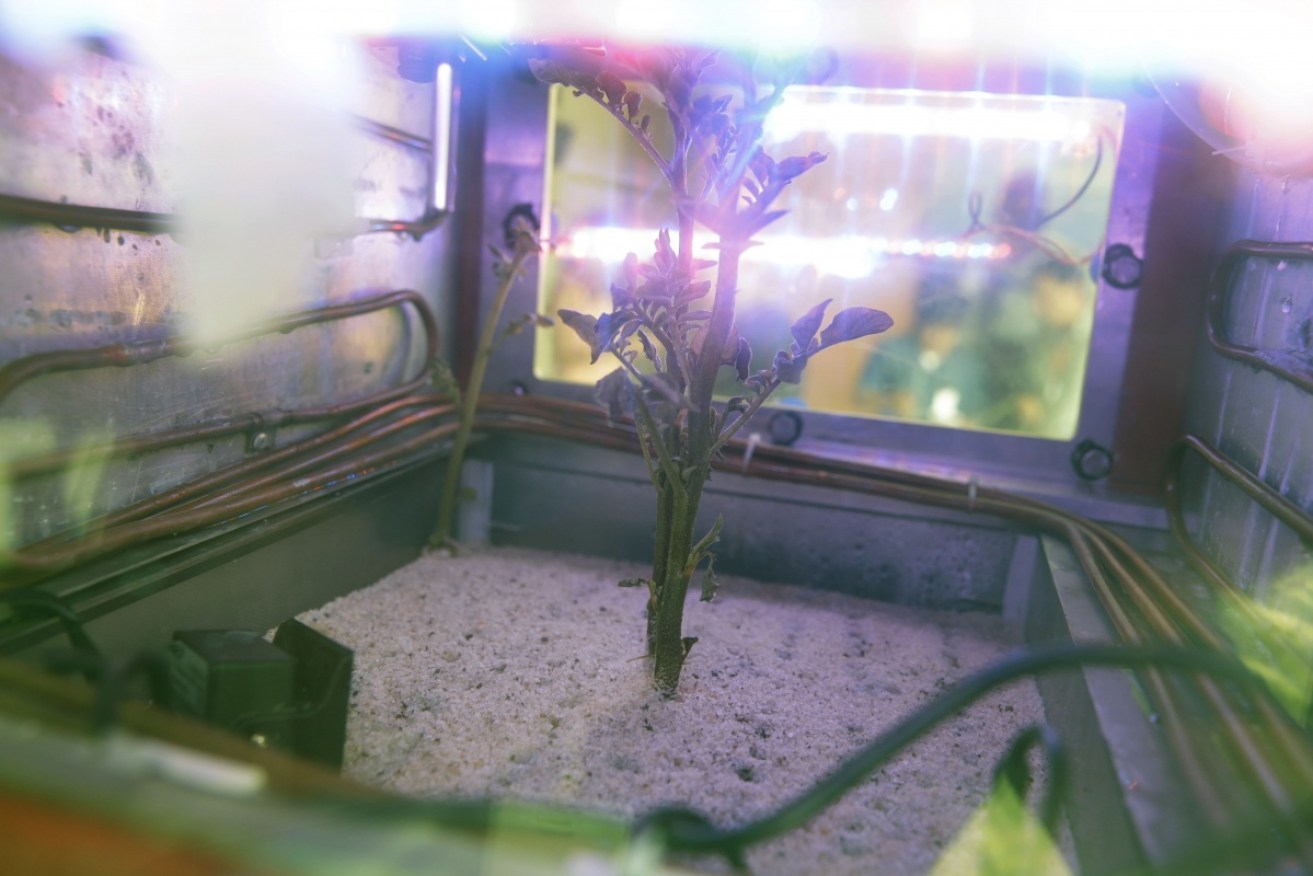Bacteria that can grow in space could help humans breathe on Mars

Plant life grew in a Mars simulator in Peru last year. Photo: AAP
Particularly tough bacteria that have been on Earth for more than 2.5 billion years could help humans colonise Mars and identify life on other planets.
A study involving the Australian National University (ANU) and published on Friday in Science explored what allows cyanobacteria called Chroococcidiopsis to survive in extreme conditions.
One key to the bug’s success is its photosynthesis process – storing energy from light and creating oxygen – which can operate under low light and red light.
Certain types of cyanobacteria found in harsh environments, like Antarctica and the Mojave Desert, have even survived when tested in outer space, outside the International Space Station.
One of the researchers on the project said, while it “might sound like science fiction”, the properties of these bacteria could be harnessed to create breathable air for humans on Mars.
“As we know, there is no atmosphere on Mars and the way the oxygenic atmosphere on Earth was created was by cyanobacteria,” ANU Emeritus Professor Elmars Krausz said.
“You have to protect it from this fierce radiation that is there and this organism Chroococcidiopsis is able to live in very low light and under a rock.
“It could actually colonise Mars and eventually create an atmosphere and also perhaps something like a soil.”
What is Chroococcidiopsis?
Cyanobacteria are single-cell organisms that use sunlight to split water into oxygen.
Chroococcidiopsis is a type of cyanobacteria that does photosynthesis differently.
“Under normal light conditions they’re completely normal,” Professor Krausz said.
“But when the light level is low and when there’s only red light, they turn on an entirely different efficient photosynthetic engine.”
That engine is able to survive under very extreme conditions, like the ones on the red planet.
How does this help us find aliens?

The cyanobacteria’s ability to operate in low light is crucial. Photo: NASA
Chlorophyll absorbing light is vital in photosynthesis for a lot of plants.
It is normally green, but the research shows red chlorophylls are critical for photosynthesis in low light.
The study’s co-author and ANU scholar, Jennifer Morton, said analysing the roles of these red chlorophylls can provide clues about where to find alien life.
“Searching for the signature fluorescence from these pigments could help identify extra-terrestrial life,” she said.
Better understanding photosynthesis
This version of photosynthesis is more efficient because it uses light that is not normally used and has lower energy.
And while it is a recent revelation, it has been going on around us for a long time.
The cyanobacteria itself has existed on Earth for more than 2.5 billion years.
“This type of photosynthesis may well be happening in your garden,” Ms Morton said.
The research also found organisms exposed to sunshine died right away once they adapted to low light.








